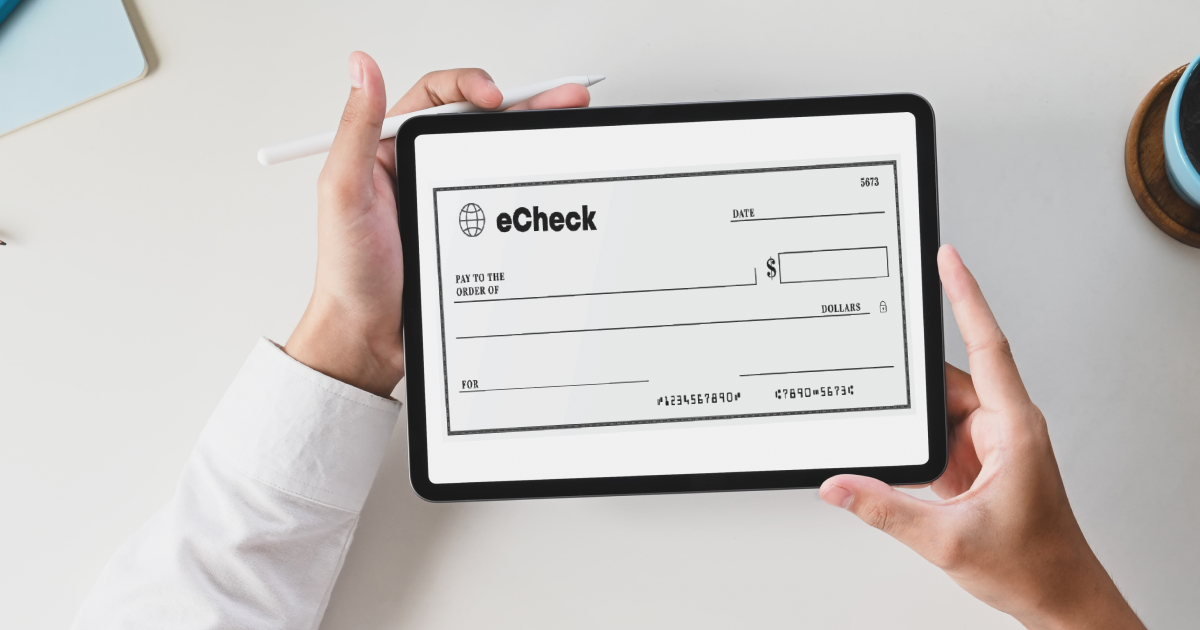
| March 7th, 2024 |
How Do I Set Up eCheck Payment Processing for Business — A Comprehensive Guide for Businesses!
In today’s digital age, businesses are constantly seeking ways to optimize payment processing methods to meet the evolving needs of their customers. One such method that has gained significant traction is eCheck payment processing. Offering numerous benefits such as convenience, security, and cost-effectiveness, eChecks have become a preferred choice for businesses of all sizes. In this comprehensive guide, we’ll delve into the intricacies of setting up eCheck payment processing for your business, covering everything from understanding the basics to implementing best practices.
Understanding eCheck Payment Processing —
Before delving into the setup process, it’s essential to grasp the fundamentals of eCheck payment processing. Simply put, an eCheck, or electronic check, is a digital version of a traditional paper check. Instead of physically writing and depositing a check, eChecks allows businesses to initiate payments electronically, leveraging the Automated Clearing House (ACH) network. This network enables the seamless transfer of funds between bank accounts, making eChecks a convenient and efficient payment solution.
Advantages of eCheck Payment Processing —
- Cost-Effective: eCheck transactions typically incur lower processing fees compared to credit card payments, resulting in cost savings for businesses.
- Convenience: Customers can make payments directly from their bank accounts, eliminating the need for credit cards or physical checks.
- Security: eCheck transactions are highly secure, with encryption and authentication measures in place to protect sensitive financial information.
Setting Up eCheck Payment Processing —
Now that we’ve covered the basics, let’s explore the step-by-step process of setting up eCheck payment processing for your business:
Choose a Payment Processor:
Start by selecting a reputable payment processor that offers eCheck processing services. Look for providers with a proven track record, robust security measures, and competitive pricing.
Complete the Application:
Once you’ve chosen a payment processor, you’ll need to complete an application to set up eCheck processing. Provide accurate information about your business, including contact details, banking information, and any required documentation.
Integration:
Depending on your business needs, you may need to integrate the eCheck processing solution with your existing payment infrastructure. Your payment processor should provide guidance and support throughout the integration process.
Verification and Approval:
After submitting your application, the payment processor will verify your information and assess your eligibility for eCheck processing. This may involve background checks and risk assessments to ensure compliance with regulatory requirements.
Testing:
Before going live, it’s essential to test the eCheck processing system to ensure seamless functionality and compatibility with your business operations. Work closely with your payment processor to conduct thorough testing and address any issues that may arise.
Launch and Monitor:
Once everything is in place, launch your eCheck payment processing system and monitor its performance closely. Keep track of transaction volumes, processing times, and customer feedback to identify areas for improvement and optimization.
Best Practices for eCheck Payment Processing —
To maximize the benefits of eCheck payment processing, consider implementing the following best practices:
- Secure Payment Gateway: Choose a payment processor that offers a secure payment gateway with robust encryption and fraud prevention measures.
- Clear Communication: Clearly communicate eCheck payment options to your customers, including instructions on how to initiate transactions and any associated fees or processing times.
- Customer Support: Provide dedicated customer support channels for eCheck transactions to assist customers with any inquiries or issues they may encounter.
- Regular Updates: Stay informed about regulatory changes and industry developments related to eCheck processing to ensure compliance and optimize your payment processes accordingly.
- Continuous Improvement: Regularly evaluate the performance of your eCheck payment processing system and implement improvements based on customer feedback and emerging technologies.
Conclusion —
In conclusion, setting up eCheck payment processing for your business can streamline transactions, enhance security, and improve overall customer satisfaction. By understanding the fundamentals, following best practices, and choosing the right payment processor, you can unlock the full potential of eChecks as a reliable and cost-effective payment solution. Embrace the digital revolution and take your business to new heights with eCheck payment processing.